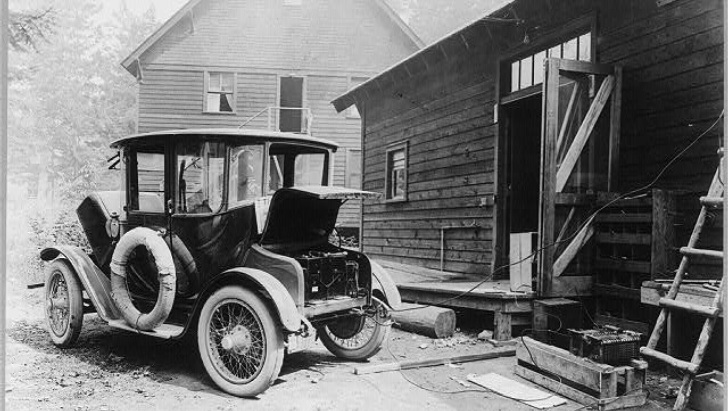As a young motorist reading this, you might think electric cars are a new invention and people back when the first motorized vehicles were emerging had to rely on steam power and crappy early gasoline mono-cylinder engines to move around. Well, it’s not quite like that...
The first practical production electric car has been built in London in 1884 by Thomas Parker, the same man responsible for electrifying the city’s underground transportation system. He used his own specially designed high-capacity rechargeable batteries which were based on lead and acid to power a thing that pretty much resembled a horseless carriage.
Better nickel-iron batteries came around in 1911 and that’s when Anderson Carriage Company decided to change its name into Detroit Electric and start building electrified coaches, which surprisingly became pretty popular in those times.
So popular that famous people like Thomas Edison, Mamie Eisenhower and John D. Rockefeller Jr. got themselves one of the 13,000 made until 1939. So buying a Tesla Model S or a Nissan Leaf now won’t put you in the top of list for being a green-transportation-promoting pioneer.
And it’s even more hilarious the fact that the technology used now in some EVs hasn’t changed that much since the 1900s. For example, the Detroit Electric you see here was advertised to go around 80 miles (130 km) on a full charge. It was only reaching a top speed of 20 mph (32 km/h) but for those times it was more than enough.
With today’s equivalent, say the entry level Nissan Leaf, you get the whopping range of 84 miles (135 km). Pretty close for about 90 years of progress. Yeah, you get to travel at highway speeds, but doing so, you will actually decrease your range a bit and arrive into the 1900s again. Use the AC or blast your stereo one too many notches and you’ll decrease it even more.
Guess the only technology advancements for your daily EV drive are the regenerative braking system and some cleaner-to-build, more reliable batteries. Disregarding all other interior fanciness and gizmos, you can feel the same range anxiety as a man from almost a century ago. Let’s hope those new carbon-carbon batteries will change this soon.
Until then, feel free to check the video bellow and see a Detroit Electric in action as well as its owner explaining some of its features.
Better nickel-iron batteries came around in 1911 and that’s when Anderson Carriage Company decided to change its name into Detroit Electric and start building electrified coaches, which surprisingly became pretty popular in those times.
So popular that famous people like Thomas Edison, Mamie Eisenhower and John D. Rockefeller Jr. got themselves one of the 13,000 made until 1939. So buying a Tesla Model S or a Nissan Leaf now won’t put you in the top of list for being a green-transportation-promoting pioneer.
And it’s even more hilarious the fact that the technology used now in some EVs hasn’t changed that much since the 1900s. For example, the Detroit Electric you see here was advertised to go around 80 miles (130 km) on a full charge. It was only reaching a top speed of 20 mph (32 km/h) but for those times it was more than enough.
With today’s equivalent, say the entry level Nissan Leaf, you get the whopping range of 84 miles (135 km). Pretty close for about 90 years of progress. Yeah, you get to travel at highway speeds, but doing so, you will actually decrease your range a bit and arrive into the 1900s again. Use the AC or blast your stereo one too many notches and you’ll decrease it even more.
Guess the only technology advancements for your daily EV drive are the regenerative braking system and some cleaner-to-build, more reliable batteries. Disregarding all other interior fanciness and gizmos, you can feel the same range anxiety as a man from almost a century ago. Let’s hope those new carbon-carbon batteries will change this soon.
Until then, feel free to check the video bellow and see a Detroit Electric in action as well as its owner explaining some of its features.

